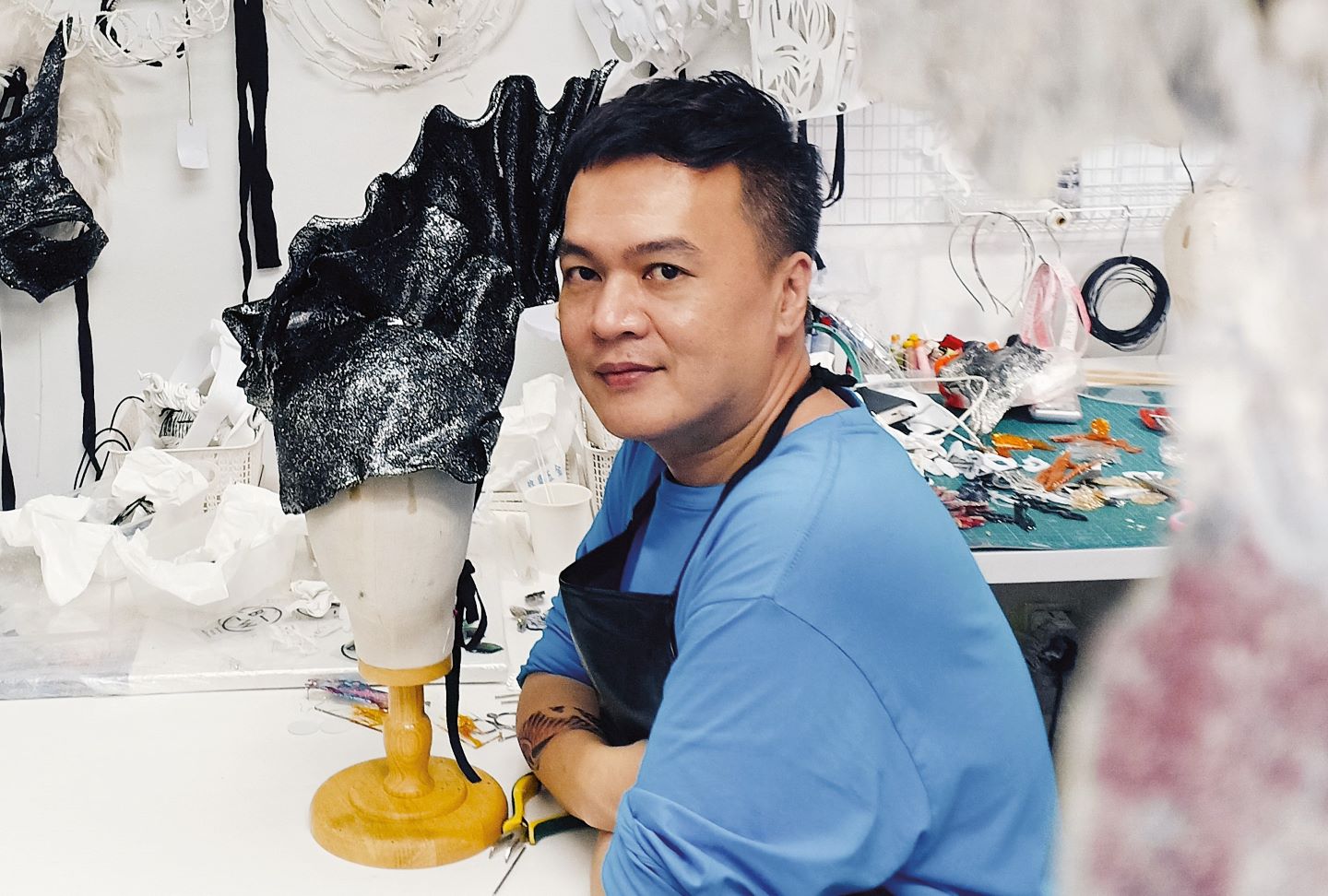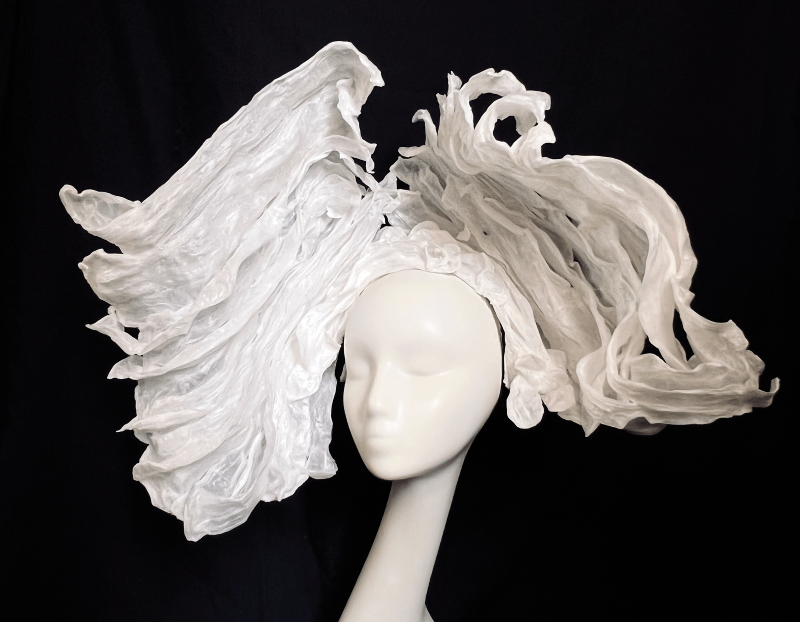
Wong is a faithful advocate and practitioner of environmentalism (Photo: Bremen Wong)
By the logic of “you are what you eat”, in some ways, you are also what you wear, and that is probably most apparent in the world of sustainable fashion. Much of the discourse on this topic of late centres around the tonnes of textile waste produced anually, short-lived microtrends spurred by social media and major fashion corporations falsely marketing themselves as eco-friendly, aka “greenwashing”. Sustainability, a buzzword in its own right, has loomed over mainstream fashion for years, and there has been little progress to show for it.
Bleak as this sounds, a growing and spirited community of artisans passionate about imbuing their work with consciousness through the use of unconventional matter has begun to take centre stage. After all, one man’s trash is another man’s treasure, and that could not be more true for milliner Bremen Wong.
Fresh from the excitement of Kuala Lumpur Fashion Week, the artist, who is known for making sculptural headwear and avant-garde accessories, opens his second solo exhibition, Being Sustainable, running from Aug 28 to Sept 14 at the Malaysian Institute of Art City Campus.
Wong, a faithful advocate and practitioner of environmentalism, has been “riding the sustainability train since day one”, as he says. This new exhibition sees items that one would normally throw away after a single use — think garbage bags, plastic bottles and watercolour papers — being given a second life where they are admired rather than discarded without a second thought.
“There’s a thrill in taking these underestimated items and turning them into art,” the designer says. Many of the mediums used were first collected during the string of lockdowns that were enforced during the Covid-19 pandemic, stored in waiting for the right opportunity to shine.
Being able to paint these objects in a new light before they are thrown away is one aspect that motivates Wong the most. “What if, before that happens, I could transform them into something beautiful and captivating?” he muses.
And “beautiful and captivating” would be sore understatements — by the milliner’s hand, once plain materials take on an airy and fantastical form. Paper and plastic are shaped into wispy ribbons and layered waves, acquiring the movement and dimensions of swirling smoke and animated ocean tides. When worn, the headpieces crown the head in a halo-like manner and are nothing short of ethereal.
fullsizerender.jpg

The theme’s significance extends beyond just the obvious love for the environment. To Wong, sustainability also speaks for an artist’s life-long commitment to their art and ability to forge ahead even when the going gets tough. From what he has witnessed, at least when it comes to independent makers, the issue of going green(er) in the fashion and art industries is not really about a lack of will, but more so the scarcity of resources and opportunities that would allow creatives to maintain that way of work in the long run.
“It’s not a walk in the park,” he says. “We need to put food on the table. Loads of designers end up cranking out ‘commercial’ designs, even if it’s just a cut-and-paste job because we need income to keep the wheels turning.”
Wong’s sentiments are only scratching the surface of the greater problem. Sustainable materials made from ethically farmed and sourced components are expensive to produce, leading to many brands opting for synthetic fabrics like polyester and nylon that, though cheaper to manufacture, have dire consequences on the planet. Over the past few years, companies have resorted to recycling existing fabrics, but this is hardly a one-and-done solution as this requires extensive chemical processes and does not prevent the inevitable shedding of microplastics from these cloths, particularly when they are in the washer.
This dilemma leaves smaller artists looking to make a living off their work with no option but to resort to what will generate profit, even if it goes against their personal beliefs and ideals. “It’s a tightrope walk between spreading the sustainability message and paying the bills,” Wong comments.
The problems with more widely exercised eco-sensitive methods like recycling does not intrinsically make repurposing a silver bullet. In the case of designers like Wong, however, they can certainly be the most meaningful and accessible, as proven with the splash he has been making in his own social circles.
img_4419.png

“I shared [my projects] with a handful of close buddies, fellow designers and artists,” he mentions. “And guess what? It was like an ‘Aha’ moment for them. Their eyes were opened to a whole new world of possibilities.”
He hopes that his exhibition will encourage others to view sustainable practices as feasible, and he anticipates “more creative souls stepping up” as designs and shows like his own take the spotlight and become commonplace.
When asked about his wishes for the future of the industry, Wong does not go into too many specifics. Instead, he touches base with the reason that many stray from sustainability and other core values in the first place. “Sometimes, [designers] lose sight of how they started, you know? They forget why they even chose this path.” he says.
“Take a moment, close your eyes, and think about what got you started. That initial spark, your ‘original intention’. That’s the real magic right there.”
Being Sustainable runs from now until Sept 14 at the MIA City Campus Gallery, 70, Jln Ampang, KL.
This article first appeared on Aug 28, 2023 in The Edge Malaysia.


